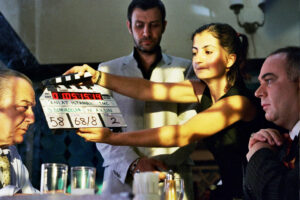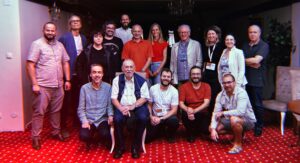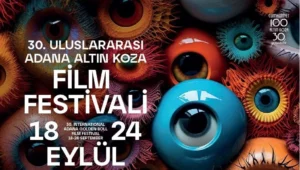In 2005, the cinematic world witnessed a mesmerizing dance of universal tales intertwining with the enchanting atmosphere of Istanbul during that era. “Anlat İstanbul” emerged as an intriguing feature film project that brought together the magical narratives of five timeless tales with the backdrop of Istanbul’s ambiance. Within this remarkable endeavor, five distinct stories were visualized through the lenses of five different directors, while it was Mehmet Aksın who shaped the visual realm. The captivating allure of the film found its way to the screen through his meticulous and imaginative lens.
We engaged in a brief conversation with Mehmet Aksın, delving into the journey of capturing “Anlat İstanbul” and the intricacies of his role as a director of photography. We explored how he prepared for this unique project, his experiences working alongside five different directors, and his insightful observations and approach behind the camera.
“Anlat İstanbul” stands as a project seldom encountered from a directorial standpoint. How was the experience of collaborating with five directors on a single project? What were the challenges and advantages?
It was an incredibly exciting situation for me. Striving to maintain a stylistic coherence throughout the film while accommodating each director’s cinematic approach was quite the balancing act. Moreover, the distinct atmospheres imposed by the settings of each story, such as the metro construction, airport, and historical mansion, introduced another layer of complexity. Attempting to find a common visual language and style with each director within a single project was exhilarating yet simultaneously a demanding endeavor. This film allowed me to experience something truly extraordinary, as I endeavored to comprehend five different directors and harmonize their visions.
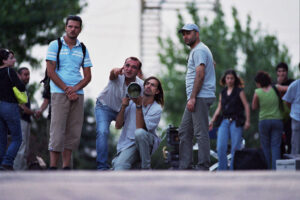
Could you share some insights into your preparation process for the project? Did you reference any visual materials?
Our intensive preparations took around two months. We held separate meetings and location scouting trips with each director. We didn’t follow a strict visual reference as a foundation. The film comprises five stories that commence during the same Istanbul afternoon and progress in parallel timelines. We conducted various tests to determine the tone of the “Istanbul afternoon” and particularly the hues of the setting sun’s light. Once decided, we adhered to that chosen tonal palette.
From a technical standpoint, which scene posed the most challenging aspects as you visualized the perspectives of five different directors?
Several scenes posed challenges:
In Ömür Atay’s section, capturing the moment when characters are released from Sağmalcılar Prison had to occur during the exact moment of sunset. The bureaucratic intricacies involved in shooting within the prison made timing unpredictable, leading us to make three separate trips just to capture the right hour.
In Selim Demirdelen’s segment, the conversation scene between Mimi and Banu aboard a night ferry presented an exciting challenge. Ensuring the ferry was at the right place, right time, and right angle to capture the silhouette of Istanbul’s skyline against the dawn sky required close coordination via radio communication with the captain. In the same segment, illuminating the Haydarpaşa Station compelled us to set up two 6kW Cine Par lights from the Kadıköy-Beşiktaş ferry terminal, which hindered maritime traffic.
Kudret Sabancı’s section predominantly takes place underground, amid the colossal dark tunnels of the then-under-construction Istanbul metro and the dilapidated corridors of Yedikule Dungeons. Physically, this took quite a toll on us.
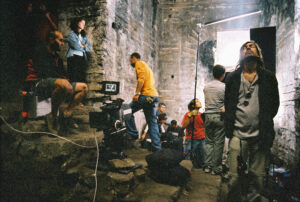

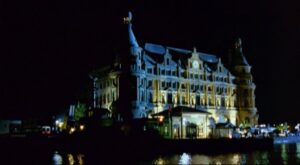
A pivotal scene central to all the narratives is the restaurant scene. All five directors were present on set. Could you share your thoughts during scene planning?
The scene’s dramatic role within the script was significant. Initially, Liman Lokantası in Karaköy was proposed as the location. However, our site visits revealed that Liman Lokantası wouldn’t yield the desired cinematic impact. The possibility of utilizing Tarihi Pandeli Lokantası in Eminönü’s Spice Bazaar excited me. The contrast-conducive texture and architecture of the location, characterized by small windows and turquoise ceramic walls, allowed for a distinct lighting scheme. Upon entering the establishment, each director had their shot composition planned, and the shooting sequence had been determined. We formulated a lighting strategy in harmony with this rhythm, and we captured the scenes sequentially and efficiently. The most challenging aspect was aligning the large light sources that mimicked sunlight coming through windows—located on the three large cranes placed at Eminönü Square—so that they achieved the desired effect. Despite having acquired all necessary permits well in advance, these cranes were set up, dismantled, and reinstalled three times due to disputes among local authorities.
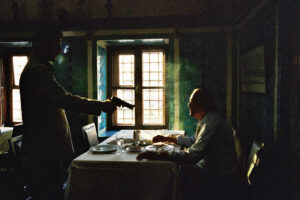
Eigthteen years have passed since the shooting and release of the project. If you were to change anything from a technical standpoint, what would it be?
We shot the film with an Arri 535B, which was among the heaviest cameras available at the time. I don’t recall the factors that determined the camera choice, but I do remember how challenging it was to carry the camera on my shoulder during the shoot. Opting for a lighter camera, such as the Arricam LT, would undeniably have made my work much more manageable.


